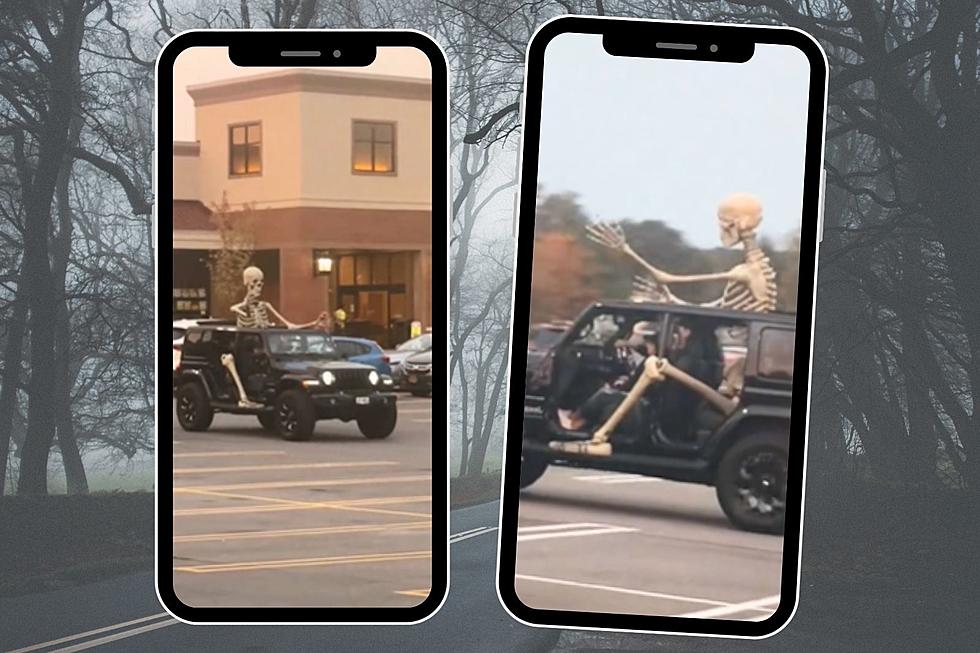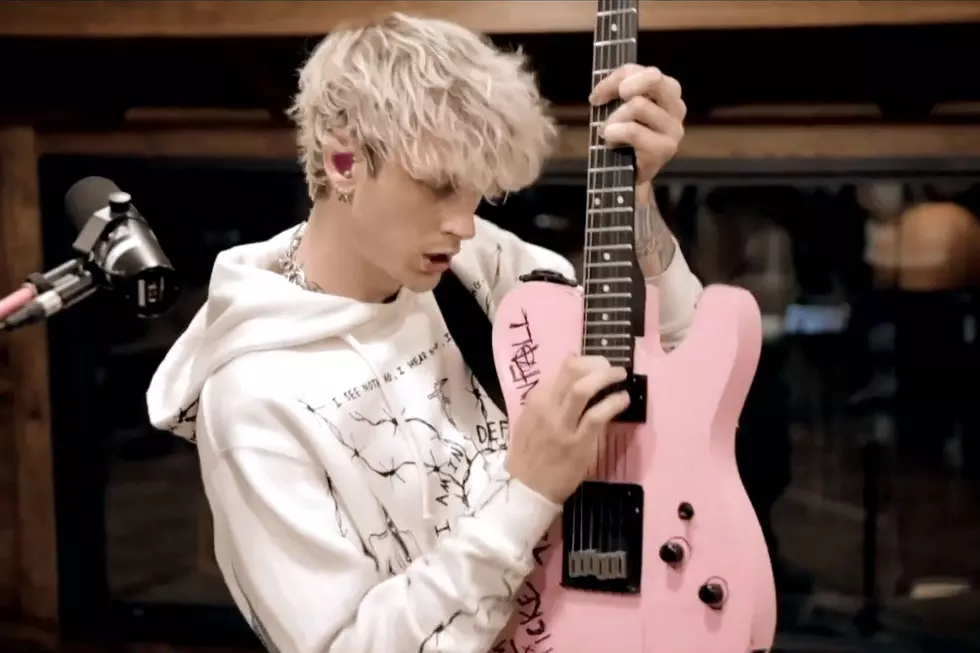![The Pen Is Truly Mightier Than The Sword: Screenwriter Sam Hamm Talks Batman ’89 [Interview]](http://townsquare.media/site/622/files/2014/08/Untitled-161.jpg?w=980&q=75)
The Pen Is Truly Mightier Than The Sword: Screenwriter Sam Hamm Talks Batman ’89 [Interview]
Twenty five years ago, in 1989, there was nothing bigger than Tim Burton's Batman. The movie was a box-office smash, and was accompanied by an unprecedented merchandising blitz. Bat-trading cards, Bat-shirts, Bat-soundtracks, Bat-toys, Bat-meals, Bat-hats, Bat-candy, Bat-books – the logo and likenesses were everywhere you looked. And the film's impact is still being felt today. It was a big-budget production with proper movie stars that changed the way the world thought about comic book movies evermore.
Earlier this summer, ComicsAlliance published a series of pieces reflecting on the importance of Batman '89 – and now, as the summer of 2014 winds to a close, we spoke to screenwriter Sam Hamm about his work on the landmark film and his thoughts on its legacy, as a perfect postscript to our 25th anniversary Bat-celebration.
ComicsAlliance: Let's start at the beginning – how did you end up getting the Batman gig?
Sam Hamm: I had an overall deal at Warner Bros., which had bid on a spec script I wrote in the mid-eighties. My patron at the studio was a young, up-and-coming executive named Bonni Lee, and one day when I was waiting in the anteroom to meet her I saw a copy of the Tom Mankiewicz draft of Batman. Naturally I pulled it down and started reading it. By the time Bonni was ready to see me I had barely finished the first act, which was very much in the vein of Superman. But I'd been immersed in comics since I was a kid, I had them in my DNA, and in that twenty-minute stretch I had already come up with a totally different take on how to tell the sad story of Bruce Wayne and his peculiar hobby. So I spent the entire meeting, which was supposed to be about some other project, quizzing Bonni on the current status of Batman.
It turned out the property had been in development for some years and was considered to be "jinxed." The studio couldn't agree on an approach (Art-Deco period Batman? Comedy Batman, starring Bill Murray, with Eddie Murphy as Robin?), and several directors, including Ivan Reitman and Joe Dante, had come and gone. The latest to try his luck was Tim Burton, who had made only one feature, Pee Wee's Big Adventure, and who turned out to be Bonni's other protege.
For the next six months I pestered everyone I met at Warners --Tim, Peter Guber, Jon Peters, Roger Birnbaum, and of course any junior executive who was willing to sit across a desk from me. And finally one day I was back in Bonni's office and she told me that Tim was hoping I might drop by before I left the lot. I popped in, asked what was up. He said, "I was wondering. Would you have any interest in working on this Batman thing?" and I let out what felt like a six-minute sigh of relief. Finally!
CA: So you were definitely familiar with Batman before taking the job.
SH: Never heard of him. Why do you ask? No, I'm being facetious. I had been reading Batman comics since age 4, when my uncle bought me a copy of Batman #133 at the drugstore. The lead story was "Batwoman's Publicity Agent," and the cover featured not only Batman and Robin, but Batwoman, Bat-Mite, and Ace the Bat-hound--the whole Bat-crew.
CA: Were there any particular Batman stories that influenced your take on the character?
SH: We wanted to do a "dark" Batman from the outset. Although we didn't consciously model our version on a particular storyline from the comics, I would probably cite the Denny O'Neil stories from the early '70s, like "The Joker's Five-Way Revenge", as an important tonal influence. Denny was plainly trying to reclaim the mystery of Batman and the homicidal insanity of the Joker, and he had lots of help from Neal Adams, Jim Aparo, et al.
I also have to mention Giant Batman Annual #3, featuring Batman and Robin's Most Fantastic Foes, which made a huge impression on me as a kid. The older stories reprinted from the thirties and forties ran a bit more toward the lurid side than the relatively tame, post-Comics Code product I was used to. I loved Gorilla Boss, the crime lord who had his brain transplanted into the body of an ape, and of course Two-Face, the D.A. disfigured by an acid-throwing witness in mid-trial. There's a lot of Two-Face in my version of the Joker.
We were excited by the "revisionist" stories such as Dark Knight Returns, which was just coming out as we began work on the movie, and The Killing Joke, which followed a bit later, although there were only stray bits and pieces we could borrow from them. At that particular moment there was a weird recrudescence of interest in Batman…we knew something was burbling under the surface, but of course we couldn't foresee the cultural phenomenon we were about to become part of.
CA: Though it's tough to remember now, Michael Keaton was known at the time as a comedic actor, and his casting was met with some controversy. What was your reaction to learning he'd taken on the lead role?
SH: My first reaction was "Whaaa-a-aa-aaaa???" Like everyone else, I had fallen into the trap of assuming you are casting the part of Batman -- but in fact the part you're casting is Bruce Wayne. Keaton was obviously best known for comedy, but he'd been terrific in Clean And Sober, a straight dramatic role, and that performance was one of the reasons Tim wanted to cast him. (That, and their obvious comfort level from working together on Beetlejuice.) So I calmed down, went back and rewatched Clean And Sober, and I immediately saw what Tim was hoping to get from him. He was terrific, by the way. Nicholson gives the more flamboyant performance, but Keaton anchors the picture emotionally.
CA: Were you kept in the loop as casting happened? Were you at least kept informed so you could keep the actors in mind as you wrote their characters?
SH: I heard casting speculation during the course of pre-production (for example, we knew the studio had always wanted Nicholson for the Joker, but we never thought for a minute that we could actually get him). But most of the casting was done after I had turned in my last draft--and, as a writer, I wouldn't have had a vote anyway!
CA: How closely did you work with Tim Burton and the producers?
SH: Very closely. Tim and I got along extremely well from day one. The question that intrigued us both was, "Why would an incredibly rich guy want to put on a weird suit and beat up petty crooks?" I mean, he'd have to be crazy, right? We hashed out a loose storyline built around the notion that we would start with the Joker's origin and treat Batman's origin as a mystery to be solved (by Vicki) in the course of the story. What would happen to Batman if he met a girl and started to go . . . sane?
After that, I'd go off to work for a couple of weeks, and then Tim would fly up to hang out in San Francisco and we'd pace around cooking up new sequences, solving problems, etc.
CA: The Writer's Guild of America went on strike just after you'd turned in a completed draft of the script, and other (non-guild) writers were brought on to do revisions. Were you able to jump back onto the project once the strike wrapped, or were you already on to the next project?
SH: Production started during the strike, so I was obviously unable to do production rewrites. A British writer, who was not bound by WGA rules, was hired over the summer. I would have been happy to rejoin the picture after the strike ended, but WB chose to go with Warren Skaaren, who had done production rewrites on Top Gun, among others.
CA: Did you have any hand in crafting that climactic sequence in the bell tower?
SH: Yeah, the belfry sequence was in every draft I ever wrote. Batman and the Joker square off, the Joker is about to make his escape via helicopter, the helicopter rouses a swarm of bats that have been sleeping in the rafters, and the bats engulf the Joker, who falls to his death, done in by Batman's totemic "familiars." Unfortunately the production was well over-budget by that point and could not afford a full flock of union bats. Vicki was a last-minute, on-set addition, perhaps to compensate.
CA: Were there any cut sequences that you wish had made it into the finished film?
SH: Several!
1) I had a highly ingenious third-act introduction for the Bat-signal that I still miss.
2) I had originally handled the murder of Bruce's parents as a dream Vicki has after being spirited off to the Batcave and recognizing Bruce behind his cowl. The plotline of Vicki accidentally discovering Batman's identity by digging into Bruce's past was mostly lost in the finished picture.
3) The studio insisted on having Robin in the picture, and Tim and I couldn't figure out how or where to squeeze him in. We spent a whole weekend pacing around in a sweat, but we couldn't get anywhere, and we finally decided that we would have to call the WB brass and tell them there would be no Robin. Then, moments away from picking up the phone, we started spitballing again, and miraculously, we came up with a really cool Robin sequence. So a couple of years later, when production is underway, and the picture is running over budget, what does the studio decide to cut? You guessed it – Robin! And in the end, nobody missed him.
CA: Once the film was released, and met with massive success, were there things that particularly surprised you?
SH: The scale of it all. We got mixed critical reviews, but we made more money more quickly than any other movie up to that point (back in the days when a $40 million opening weekend actually meant something). Everybody went Batsh*t. The Zeitgeist Bar in San Francisco painted a bat-signal over the front door. A guy in my neighborhood, a few blocks away, painted an enormous bat-logo on the garage door of his house. That was the point at which I became a little embarrassed, and thought: perhaps this thing has gone a bit too far...
CA: Around the time of the film's release, you wrote a well-received storyline, "Blind Justice," for the comics. Was it difficult to switch gears and work in comic-book continuity after creating your own set of rules with the movie script?
SH: Whole different discipline, whole different toolbox, but that was the fun (and the challenge) of it. For DC, I wanted to do a story that would feel like a comic-book story, nothing definitive or revisionist, a narrative that would fit within the existing continuity of an ongoing character. I had a great mentor in Denny O'Neil and a great collaborator in Denys Cowan, who is still one of my best pals. And I will tell you a secret: writing comics is much harder than writing movies!
CA: And now, 25 years after the movie hit screens, how do you feel about its legacy?
SH: I'm actually pleased that the character continues to inspire new interpretations. The scale of the Nolan movies makes our humble effort seem small, personal, almost intimate in retrospect. And although I do secretly kinda wish you could occasionally see a big-budget studio picture that wasn't based on a comic book, I cannot deny that Batman has been very, very good to me.
More From ComicsAlliance









